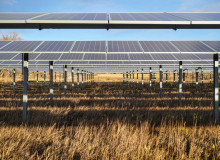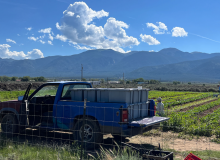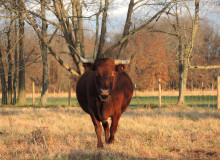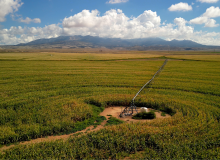Colleges & Education
University of Colorado Boulder
Scientists, drought-stricken farmers, and politicians on both sides of the aisle are expressing increasing interest in solar agriculture.
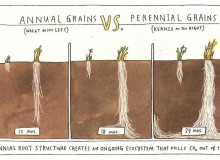
Standard annual grain roots vs. perennial grain roots of the Kernza grain. (The Land Institute/CC-BY-NC-ND)
Michigan State University
Perennial grains will change the agriculture landscape as we know it and take us one huge step closer to halting climate change.
SUNY Environmental Science and Forestry
Durand-Eastman beach has been closed in the past due to pollution, will it be inaccessible in the future due to climate change?
University of Missouri
Climate change is redrawing the agricultural map of the United States. As corn becomes less economically viable with changing Midwestern weather patterns, farmers look to a more diverse future.
Planet Forward Correspondent | SUNY Environmental Science and Forestry
In this podcast, Daniel "Farmer Dan" Carmona shares his personal historical account of water, politics, underground rivers, and water witches!

(Venti Views/Unsplash Licencse)
Michigan State University
Sail ship company, Veer Voyage, plans to decarbonize cargo shipping with their new vessels.
George Washington University
Our current global food system leaves billions of people underfed or overweight and contributes to one-third of global greenhouse gas emissions. Piscataway woman Anjela Barnes says it doesn't have to be this way.
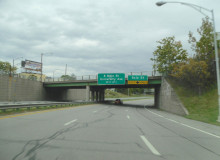
The construction of Rochester, New York's Inner Loop not only damaged communities, but it also decreased pedestrian biking traffic, contributing to a car-centric infrastructure. As seen in this image, traffic volumes on the Inner Loop were never particularly high, which is one of the factors that led to its removal. (Doug Kerr/CC BY-SA 2.0)
SUNY College of Environmental Science and Forestry
Proposed changes are coming to two expressways that have disrupted historically Black communities in different Upstate New York cities.
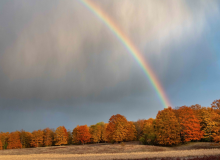
Pigeon River Country State Forest, home of the Bluesource/DNR Big Wild Forest Carbon Project. (Michigan Department of Natural Resources/CC BY-NC-ND 3.0)
Michigan State University
As businesses and states eye net zero emissions, carbon offset programs have helped institutions curb carbon emissions, at least on paper.
Planet Forward Correspondent | Colorado State University, Center for Science Communication
In this photoessay, explore the geography of Colorado's agricultural water needs through the stories of two men living in opposite corners of the state, but whose experiences surrounding the need for irrigated water are incredibly similar.

